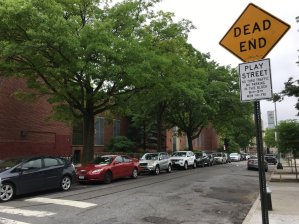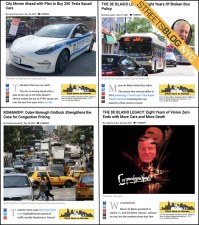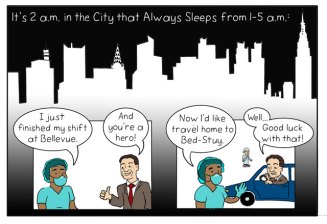Still Looking for That Magic Highway
Today on the Streetsblog Network, we’re thinking about the reinvention of cars. At his blog The Bellows, Ryan Avent has written a two-part piece about how best to enable innovation in car design. His starting point is a review in The American Prospect of a new book called Reinventing the Automobile: Personal Urban Mobility for the 21st Century, which takes a gung-ho approach to futuristic, nimble, hyperconnected vehicles that will essentially drive themselves. It’s a dream that goes back generations, and it’s still quite robust.
In his first post on the topic, Avent framed the problem this way:
Every weekday, tens of millions of Americans get into vehicles that are
full of passenger space which won’t be used, with engines capable of
horsepower and speeds that won’t be attained, holding fuel tanks that
could power the car for distances that won’t be traveled. The result of
all this over-engineering is that cars cost way more than a vehicle for
daily commuting need cost, and they consume way more energy than a
vehicle for daily commuting need consume. This all adds up to a
remarkable waste of resources, even before you begin talking about
things like congestion. Why are we stuck in this wasteful equilibrium?
Avent goes on to suggest that because there is no road space in which to use radically redesigned cars, innovation is stifled. He writes that one solution would be to create "open roads" — city streets where more experimental vehicles could be used, allowing entrepreneurial manufacturers to try out more efficient, lightweight and intelligent designs without having to meet the current requirements for roadworthiness. He also argues that waiting for a top-down reconfiguration of streets and highways to accommodate the hypothetically smarter cars of the future is not a workable option.
In his second post, Avent addresses commenters who take issue with his premise:
What you want to do is create a space where firms can experiment
with new designs and compete for customers. That’s hard to do, when the
rules of the road have been determined and institutionally reinforced
over the course of a century. But I think it needs to be done. The
reason we’re all stuck with the car is that there’s no road space
available in which alternatives can operate and potentially thrive.
Apple can’t sell millions of little iCars, because there’s no place for
buyers to use them. They’d have to sell plain old cars, which is an old
and tired business, gradual shift in propulsion notwithstanding. Create
space for innovative new designs, and you’ll get innovative new designs.
The question is, of course, where is that space going to come from? It seems unlikely that drivers of conventional vehicles will give it up easily. Taking a lane, or a sidewalk, from bikes or pedestrians seems a lot more probable politically. That was what the folks at GM suggested doing with the PUMA, their most recent prototype for a reconsidered "personal mobility device." (One of the authors of "Reinventing the Automobile," Christopher Borroni-Bird, is also not-so-coincidentally one of the GM execs behind the PUMA.)
And the scenario of lots of little experimental cars zooming around at speeds of 30 miles an hour or so in an urban or suburban environment is rather terrifying, even if they’re all quite beautifully designed. Because while the dream of removing the human element from the piloting of a car remains, the attainment of that dream seems still very far away. Drivers are drivers. Drivers are human. And far too many are like the ones Sustainable Savannah discusses in a post today — people who say things like this:
"People can do what they want while they drive. The state
representatives cannot stop anyone from reading and responding to text
messages. It is neither their phone nor their car, so they should back
off."
That’s an attitude that technology is never going to solve — unless humans are entirely removed from the driving equation.
We’re interested in hearing what you have to say about this question, and about Avent’s thoughts on the subject. Let us know in the comments.




